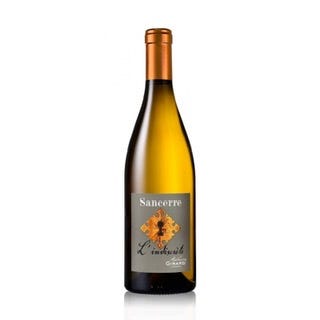This is something of an experimental first post; if folks like it, I’ll stick with it.
This past Tuesday (1 March 2022) I attended the 16th annual Kosher Food & Wine Experience (KFWE), held this year at the Hilton Meadowlands in East Rutherford New Jersey. This is an annual event hosted by the Herzog family’s Royal Wine Corp., the largest producer, importer, and exporter of kosher wine in the United States and Europe; these are the folks who produce the ubiquitous Kedem Grape Juice and the blue-bottle Bartenura Moscato from Italy. This year was the resumption of the in-person event. Last year they did an excellent if slightly too-long zoom program, combined with tasting kits for participants to stay engaged at home.
For years now this massive event has really been a string of events in NY, Florida, Los Angeles, Israel, and London. These KFWE events typically attract thousands of trade folks and kosher foodies who flock to them to sample the latest offerings. They’ve always been good fun.

But for a handful of masked winery representatives, there was little at this Meadowlands show to suggest that COVID was still a “thing” amidst the reduced crowd of around 1500, spread across two ballrooms, over the course of 6 hours. The crowd moved in waves, with probably no more than 4-500 folks at any one time milling about. Though a bunch of us seemed to be there for all six hours — and by the end I was as physically tired from being on my feet non-stop and schmoozing with folks, as my palate was from tasting wine.
There were, of course, some outstanding wines presented there — some new, some were simply new vintages, and some were the familiar staples, but showing well. There were dry wines, sweet wines, semi-dry and semi-sweet, sparkling wines, party wines (commercially bottled Sangria), and wines packaged in cans. There were wines from Israel, France, California, New York, New Zealand, Italy, and Spain. There was crap wine there too, of course, and so-so wines that I’d sooner skip, and plenty that were decent-enough which I wouldn’t say “no” to but which I wouldn’t personally buy for my table. The choices were many and varied.
Among my two favorites at the tasting, both from France, were:
Domaine la Clef du Récit, Anthony Girard, Sancerre, L’indiscrete 2020 — a fresh, zippy, attractive, tightly structured, flinty, dry Sauvignon Blanc with the usual citrus, leafy, slightly smoky, herbal floral notes. Absolutely lovey now. [Apparently this one may not actually get imported in the end — I’ve no idea what the issue is; if it does make it here it’ll likely be in the $40 range.]
Château Lagrange, Saint-Julien, Grand Cru Classé, 2019 — Stunning! This is silky, seductive, vibrant, elegant, delicious, and complex. Copious black fruit notes, lively acidity, dense tannins, with overall precision and finesse. This is an exceptional medium-to-full bodied red Bordeaux blend of cabernet sauvignon (80%), merlot (18%), and petit verdot (2%); it should generously reward proper cellaring. Though too young now, if you really can’t wait long-term, give it at least until 2024. Suggested retail price of $130.
There were many, many others — of course — but those two really stood out for me. Most of the wines there can ably demonstrate the following point, but this excellent dry white and exceptional dry red speak to just how far kosher wine has come in a fairly short period of time.
Kosher wine has become a fairly big business, and has expanded mightily and improved dramatically over the past 20 years.
Today there are numerous kosher wines—from Israel, California, France, Italy, Spain, and elsewhere—that have been very favorably rated by all the usual wine critics and publications, earning healthy 90+ scores from Robert Parker’s The Wine Advocate, James Suckling, The Wine Spectator Magazine, Wine Enthusiast Magazine, and the like.
For much of its history, however, the vast bulk of kosher wine production was focused on availability rather than quality, much less on providing enjoyment as a refreshment or beverage. The reasons for this are tied primarily to Jewish history, and to a degree also to the natural rhythms and preoccupations of Jewish religious thinking. Kosher wine is, after all, a religious matter.
Unlike most distinct categories of wine, kosher wine is defined by religious doctrine first and foremost, rather than by taste, style, geography, or the like. In real terms, any wine can be produced as a kosher wine.
Kosher (כָּשֵׁר) is a Hebrew word that means fit [for consumption], pure, proper or appropriate, in the context of the Jewish dietary code of laws, or kashrut (כַּשְׁרוּת; the nominative form of the adjective kosher). These are the religious rules regarding permitted and forbidden foods for Jews — or, at least in the modern world, for those Jews who choose to observe and be governed and guided by them.
Kashrut is a huge category of Jewish religious law, or Halacha (הֲלָכָה; literally, “the way [to go]”). The Lord commanded the Israelites “Be holy because I, the Lord your God, am holy” (Leviticus 19:2). In accord with this divine charge, religiously observant Jewish people strive to live in accord with Halacha, seeking from it guidance and principles for proper Jewish behavior in all aspects of life, each and every day — from minutia of how best to fulfill religious obligations, celebrate Jewish holidays, to how to behave with others, whether friends, family, strangers, employees, employers, customers, enemies, criminals, or even the dead. Halacha offers guidance to the Jewish people, individually and collectively, to help them fulfill their divine role as a holy people.
The rules of kashrut (kashrus is how it is commonly pronounced by Ashkenazi Jews) are based in Biblical precepts—the basics are found in Leviticus chapter 11 and Deuteronomy chapter 17—as interpreted by the rabbinic exegesis, discussions and rulings presented in the Talmud, periodically augmented and expanded over the centuries by rabbinic halachic legislation, and as applied and adapted to contemporary living by the ongoing scholarly discourse and writings of contemporary rabbis. The rules of kashrut are prodigious, and can be complex in administration and observance in the course of commercial food processing, but are reasonably straightforward guidelines for those who seek to live by them in daily life.
This all pervasive tethering of daily life to Halacha is why Orthodox Jews, for example, focus so much of their time, money, and energy on Jewish education — seeking additional institutional structures outside of just family life to further train, socialize, and reinforce fealty to Halacha as a way of life for their children. Habituation being seen as a crucial element of this training.
While most rules of kashrut are focused on ingredients, the laws of kosher wine are different. The ingredients do matter, obviously — but grapes are an inherently kosher food item. Commercial yeasts and fining agents need to be kosher too, but these are generally not significant hurdles either.
Indeed, the only really significant distinction between kosher wine and all other wine is the labor involved in its production. Using 100% kosher ingredients is necessary but not sufficient to produce kosher wine, even if every step were dutifully observed by Orthodox rabbis.
When it comes to wine, every stage from the moment the juice is separated from the grape through to the final sealing of the bottle has to be carried out by Sabbath observant Jews. If the hands-on labor involved is not 100% done by a Sabbath observant Jew at every stage, the wine immediately ceases to be kosher.
While wine is generally considered a luxury good in economic terms, wine is an essential component to religious Jewish life. Wine is thus not a luxury, but a necessity. As Rabbi Berel Wein succinctly put it,
“Wine is one of the main libations mentioned in the Torah regarding the sacrificial offerings in the Temple service. Wine is the drink of Kiddush on Shabbat, it is the four cups of the Pesach Seder, it is present at every circumcision ceremony, the redemption of the first born son and at wedding ceremonies. In short, wine is the most consecrated drink in Jewish law, tradition and life.”
This is Jewish wine, or the wine made by and for religiously observant Jews. These religious Jewish consumers may or may not enjoy drinking wine as a beverage, as liquid refreshment to accompany their meals and social gatherings, but they absolutely need kosher wine every week to make the kiddush to sanctify the Sabbath, and to sanctify the festivals, and for circumcisions, and weddings, and to fulfill the obligation of the four cups on Passover, and all the rest of it.
Potable kosher wine is a necessity of Jewish life, pleasurable kosher wine is a luxury. This simple truth is why Jews became accustomed over the years to what today is politely called “sacramental” wine. This is why kosher wine developed such a persistent reputation for being both sweet and terrible for so many years.
Kosher wine also opens a window through which almost the entirety of Jewish life can be explored—the necessity of wine in Jewish religious life and observance, the essential Jewishness of its production and the utter rejection of hands-on involvement by those outside of the community of the faithful, the role of wine in Jewish thought and culture, the history of Jewish life in Israel, the history of Jewish life in the diaspora, the imperative of halacha and rabbinic authority to Jewish social and cultural development, and so much more.
While there is a great deal more to be said about all of this, of course, kosher wine is first a foremost just wine like any other in strictly physical terms. It is a beverage made from the fermented juice of grapes. Like all wine, kosher wine can be simple and without charm, or sublime in strictly hedonistic terms.
Good wine of any sort is an important part of enjoying life, and great wines the world over elevate the moment, sometimes offering astonishment, posing wonderful questions that linger.
About me:
By way of background, I have been drinking, writing, consulting, and speaking professionally about kosher wines and spirits for more than 20 years. For over a dozen years I wrote a weekly column on kosher wines and spirits that appeared in several Jewish publications, and my writing generally has appeared in a wide variety of both Jewish and non-Jewish print and online media. A frequent public speaker, I regularly lead tutored tastings and conduct wine and spirits education and appreciation programs. Those interested in contacting me for articles or events can do so at jlondon75@gmail.com.
In what seems like a lifetime ago, I also wrote an entirely unrelated slice of American history: Victory in Tripoli: How America’s War with the Barbary Pirates Established the U.S. Navy and Shaped a Nation (John Wiley & Sons, 2005).
These days I divide my time between London (UK), and Washington, DC.




